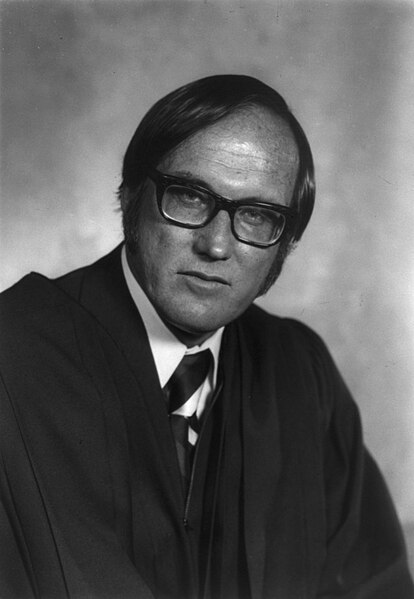The Rehnquist Court was the period in the history of the Supreme Court of the United States during which William Rehnquist served as Chief Justice. Rehnquist succeeded Warren Burger as Chief Justice after the latter's retirement, and Rehnquist held this position until his death in 2005, at which point John Roberts was nominated and confirmed as Rehnquist's replacement. The Rehnquist Court is generally considered to be more conservative than the preceding Burger Court, but not as conservative as the succeeding Roberts Court. According to Jeffrey Rosen, Rehnquist combined an amiable nature with great organizational skill, and he "led a Court that put the brakes on some of the excesses of the Earl Warren era while keeping pace with the sentiments of a majority of the country."
Chief Justice William Rehnquist
The Rehnquist Court in 2003
Rehnquist Court (September 26, 1986 - June 26, 1987)
Rehnquist Court (February 18, 1988 - July 20, 1990)
William Hubbs Rehnquist was an American attorney and jurist who served on the U.S. Supreme Court for 33 years. Rehnquist was an associate justice from 1972 to 1986 and the 16th chief justice from 1986 until his death in 2005. Considered a staunch conservative, Rehnquist favored a conception of federalism that emphasized the Tenth Amendment's reservation of powers to the states. Under this view of federalism, the Court, for the first time since the 1930s, struck down an act of Congress as exceeding its power under the Commerce Clause.
Official portrait, 1986
Portrait of Rehnquist as an associate justice in 1972
William Rehnquist (left) takes the oath as Chief Justice from retiring Warren Burger at the White House in 1986, as his wife, Natalie, holds a Bible, President Ronald Reagan and Justice Antonin Scalia look on
Rehnquist at the National Archives Rotunda in 2003







